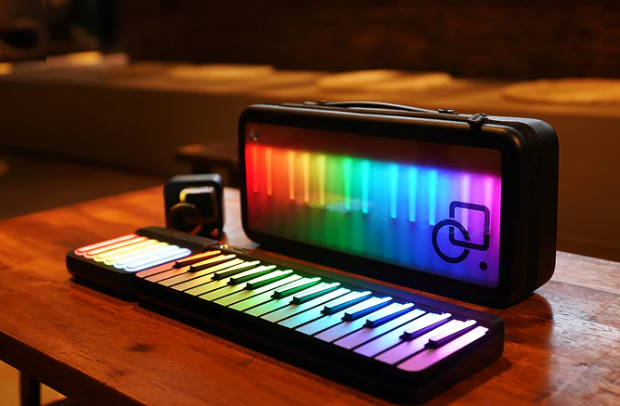
Shopping for your first set of keys can feel like stepping into a candy store where everything looks delicious—but you only get one pick. Should you go for a fully‑fledged digital piano with all 88 weighted keys, or is a versatile portable keyboard the better match for your budget and lifestyle?
The difference between digital piano and keyboard goes far beyond price tags; it touches feel, sound, learning tools, and even future‑proofing your hobby. Below, you’ll find an in‑depth, no‑fluff guide that unpacks digital piano vs keyboard in everyday language so you can buy with confidence—no regrets, no mystery fees, just music.
A digital piano aims to recreate the acoustic piano experience in an electronic shell. You usually get:
Digital pianos focus on authenticity. They don’t try to cram in 600 EDM voices because their main job is making you forget you’re not playing strings and hammers.
The term keyboard is broader—think of it as an umbrella covering:
Keyboards lean into versatility. They’re lighter, smaller, and often cheaper, giving you hundreds of tones for experimenting, songwriting, or band practice.
When a seasoned pianist sits at any instrument, touch is the first test. Here’s how the two camps differ:
|
Feel Factor |
Digital Piano |
Keyboard |
|
Weighting |
Fully weighted, often hammer‑action |
Semi‑weighted or synth‑action (lighter) |
|
Grading |
Bass keys heavier than treble |
Rarely graded |
|
Key Texture |
Matte or simulated ebony/ivory tops |
Mostly glossy plastic |
|
Pivot Length |
Longer for deeper leverage |
Shorter, shallower press |
Why care? Weighted keys build finger strength and hone dynamics. If classical pieces or formal exams are on your radar, the acoustic‑like action of a digital piano is worth every penny. On the flip side, synth‑action keys let you whip through organ glissandos or synth leads without hand fatigue—pretty neat for gigging pop players.
Polyphony = how many notes the sound engine can juggle simultaneously. Sustain a chord with the pedal, layer strings, and you’re eating polyphony like popcorn.
Here’s where many shoppers hit a fork in the road.
|
Feature |
Typical Digital Piano |
Typical Keyboard |
|
Lesson Lights |
Rare |
Common (Casio LK series, PopuPiano LEDs) |
|
Split/Lesson Mode |
Yes (half/half for teacher) |
Yes |
|
Chord Dictionary |
Sometimes |
Often |
|
Rhythm Styles |
Limited or none |
Hundreds |
|
On‑board Recording |
Basic two‑track |
Up to 16‑track or USB audio |
The Expansion Keyboard blurs the lines by adding LED‑guided keys to a modular, weighted setup, letting newbies learn chords visually and feel real hammer weight once all modules snap together. Best of both worlds? Depends on your taste.
If you’re in a fifth‑floor walk‑up, portability may trump realism. And that’s okay.
The expand‑as‑you‑grow mentality shines again with PopuMusic’s setup: start small, then magnetically add 24‑key modules and even dock a smart speaker. Honestly, modular gear can save friendships if you share living space.
|
Digital Piano |
Keyboard |
|
|
Pros |
Realistic feel, rich piano sound, higher polyphony |
Lightweight, tons of tones, sleep‑friendly lesson lights |
|
Cons |
Heavier, pricier, fewer sound options |
Less authentic action, smaller speakers, limited polyphony |
Up to a point. Lightweight keys won’t build the same finger strength or dynamic control. If classical pieces beckon, start on weighted keys sooner rather than later.
Plenty of pop hits sit comfortably within five octaves, so 61 works. As your repertoire widens, you may miss the lowest bass notes or top‑end twinkles.
Nope. The samples stay in tune for life—goodbye annual technician fees.
Yes, if you pick modular systems like PopuMusic’s smart main board plus Expansion Keyboard. Snap‑on extra sections when your wallet says “go.”
They’re a middle ground—springy but with a smidge of resistance. Fine for organ or synth parts, less ideal for advanced piano technique.
Entry keyboards: think TV on volume 10. Digital pianos: TV on 20. For coffeehouse gigs, you’ll still need an amp.
If space allows, yes—it prevents relearning. If not, pick a 61‑key board with lights to keep practice fun, then upgrade once commitment sticks.
Picking between a digital piano and a keyboard isn’t about better or worse. It’s about fit. If authentic feel fires you up to practice scales at dawn, grab a weighted digital piano and never look back.
If you crave portability, goofy synth brass, and quick song playback, a feature‑rich keyboard will keep things fresh. And hey, nothing stops you from owning both someday. Music has room for every flavor—yours included. Enjoy the journey.
Leer más

Is Keyboard and Piano the Same? Key Differences Explained Simply
You’ve decided to start making music—fantastic!—but the moment you search for “beginner piano,” two very similar‑looking instruments pop up: the acoustic piano and the digital keyboard. They share ...

What Are Keys in Music? A Beginner’s Guide to Musical Keys
Music can feel like a secret language, but the idea of a key is one of its friendliest entry points. Crack this concept and suddenly chords, melodies, and even those mysterious key signatures begin...